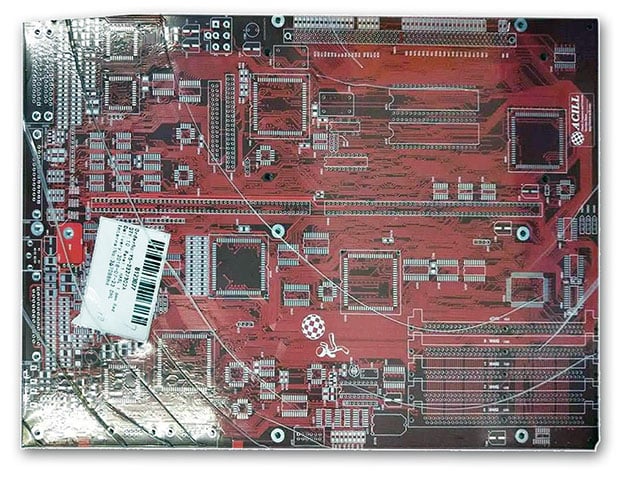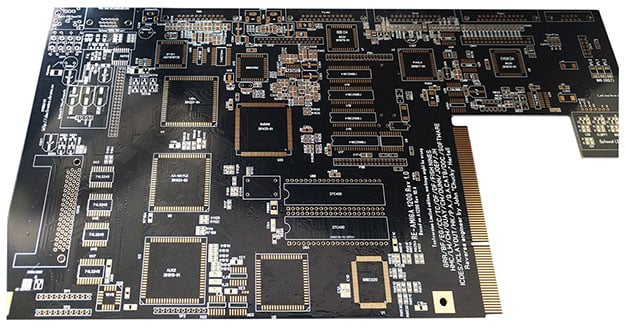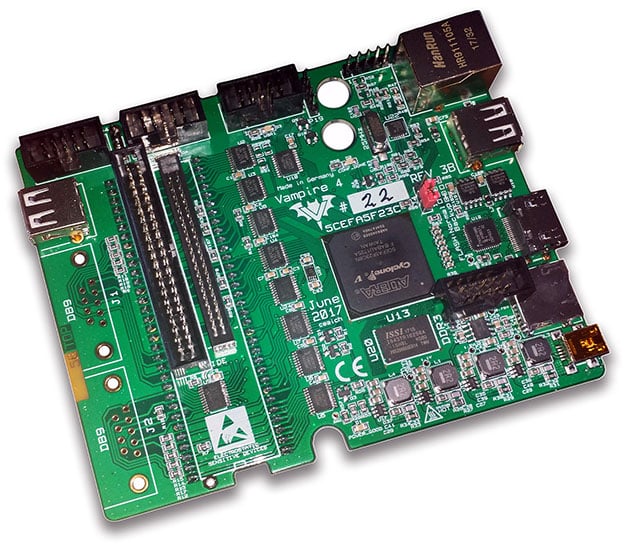Commodore's Beloved Amiga Is Being Revitalized With Updated Retro Hardware
Although it has been over three decades since the first Commodore Amigas were originally released, a fan base for the beloved systems is still going strong. Of course, the Amiga install base is a small fraction of what it was during the machine’s heyday, but the community supporting the Amiga is still vibrant and very much alive. In fact, the Amiga community – and many other retro-computing communities for that matter -- seems to be more active now that it has been in years, and a number of exciting new hardware projects have cropped up or hit major milestones in recent weeks.
Two relatively new projects, led by popular members of the Amiga community Paul Rezendes and John “Chucky” Hertell, are designed to breathe new life into the Amiga 4000 and Amiga 1200. Both men set out to reverse engineer the motherboards for these systems, not only to continue the possibility of repairing existing machines that are prone to serious damage from leaky batteries and electrolytic capacitors, but to potentially spur additional customizations down the line. The Amy-ITX, for example, is a modern, mini-ITX take on the Amiga 500. Though Paul and John have only made minor modifications to the Amiga 4000 and Amiga 1200 motherboard PCBs to this point, the possibility now exists for additional variants to arrive at some point in the future, and that's a pretty cool prospect for sure.
The first PCBs for the Amiga 4000 Replica project spearheaded by Mr. Rezendes have already arrived. The boards were reverse engineered and produced from schematics derived from an original board that was sacrificed so it could be probed to produce modern digital schematics and Gerber files. These schematics and files are what allow new boards to be manufactured. They also lay the foundation for future updates and changes to the design, to make enhancements, incorporate improvements, or even alter the entire layout to accommodate different form factors.
While the Amiga 4000 Replica project was crowdfunded and the labor handled by a company that specializes in PCB reverse engineering, John “Chucky” Hertell laid out the Re-Amiga 1200 PCB on his own, in his spare time. His efforts haven’t produced the same kind of schematics as the Amiga 4000 Replica project to facilitate future customizations, but Mr. Hertell did make a few tweaks of his own. The Re-Amiga 1200 Rev. 1 PCB has accommodations for S-Video output, timing fixes, increased pad sizes in some areas to ease soldering, and more robust power delivery.
The first actual working motherboards based on the Amiga 4000 Replica project or Re-Amiga 1200 haven’t been shown off just yet, and they may require additional revisions to work out any kinks, but both projects are good examples of the passion that still remains for the Amiga.
They are by no means the only projects, however. There are numerous accelerators, memory expansion kits, and accessories also in the works. The Vampire V4 we told you about last year has also inched closer to release -- you can actually see one of the beta boards in action here. If you recall, the Vampire V4, is an FPGA-based device that will be sold in a few configurations, including one that will function as a standalone Amiga system. It can also be used as an add-in accelerator card for some classic Amiga’s though.
The Vampire V4 is rocking 512MB of memory (spec'd at 1GB/s) and an Altera Cyclone V A5 SoC, among a handful of necessary headers, input, and outputs. The Apollo Team is working on “cores” for the V4, which are essentially the device’s firmware, which program the FPGA to allow the Vampire V4 to behave like an actual Amiga. All of the custom chips and the Motorola 68000-class processor are implemented in the FPGA and significantly outperform any of the original, classic Amigas. The Apollo Team is also working to ensure the system's AGA (Amiga Advanced Graphics Architecture) compatibility that's necessary for some specialized late model Amiga / CD32 games and demos, and also intends to incorporate things like audio out over HDMI ouput.
We’ll keep you abreast of any future developments with these projects as news hits. We suspect there will be much more to talk about in the coming weeks.
Two relatively new projects, led by popular members of the Amiga community Paul Rezendes and John “Chucky” Hertell, are designed to breathe new life into the Amiga 4000 and Amiga 1200. Both men set out to reverse engineer the motherboards for these systems, not only to continue the possibility of repairing existing machines that are prone to serious damage from leaky batteries and electrolytic capacitors, but to potentially spur additional customizations down the line. The Amy-ITX, for example, is a modern, mini-ITX take on the Amiga 500. Though Paul and John have only made minor modifications to the Amiga 4000 and Amiga 1200 motherboard PCBs to this point, the possibility now exists for additional variants to arrive at some point in the future, and that's a pretty cool prospect for sure.
The first PCBs for the Amiga 4000 Replica project spearheaded by Mr. Rezendes have already arrived. The boards were reverse engineered and produced from schematics derived from an original board that was sacrificed so it could be probed to produce modern digital schematics and Gerber files. These schematics and files are what allow new boards to be manufactured. They also lay the foundation for future updates and changes to the design, to make enhancements, incorporate improvements, or even alter the entire layout to accommodate different form factors.
While the Amiga 4000 Replica project was crowdfunded and the labor handled by a company that specializes in PCB reverse engineering, John “Chucky” Hertell laid out the Re-Amiga 1200 PCB on his own, in his spare time. His efforts haven’t produced the same kind of schematics as the Amiga 4000 Replica project to facilitate future customizations, but Mr. Hertell did make a few tweaks of his own. The Re-Amiga 1200 Rev. 1 PCB has accommodations for S-Video output, timing fixes, increased pad sizes in some areas to ease soldering, and more robust power delivery.
The first actual working motherboards based on the Amiga 4000 Replica project or Re-Amiga 1200 haven’t been shown off just yet, and they may require additional revisions to work out any kinks, but both projects are good examples of the passion that still remains for the Amiga.
They are by no means the only projects, however. There are numerous accelerators, memory expansion kits, and accessories also in the works. The Vampire V4 we told you about last year has also inched closer to release -- you can actually see one of the beta boards in action here. If you recall, the Vampire V4, is an FPGA-based device that will be sold in a few configurations, including one that will function as a standalone Amiga system. It can also be used as an add-in accelerator card for some classic Amiga’s though.
The Vampire V4 is rocking 512MB of memory (spec'd at 1GB/s) and an Altera Cyclone V A5 SoC, among a handful of necessary headers, input, and outputs. The Apollo Team is working on “cores” for the V4, which are essentially the device’s firmware, which program the FPGA to allow the Vampire V4 to behave like an actual Amiga. All of the custom chips and the Motorola 68000-class processor are implemented in the FPGA and significantly outperform any of the original, classic Amigas. The Apollo Team is also working to ensure the system's AGA (Amiga Advanced Graphics Architecture) compatibility that's necessary for some specialized late model Amiga / CD32 games and demos, and also intends to incorporate things like audio out over HDMI ouput.
We’ll keep you abreast of any future developments with these projects as news hits. We suspect there will be much more to talk about in the coming weeks.






